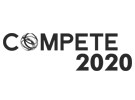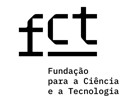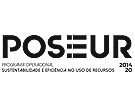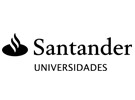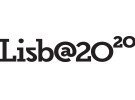


Publication in the Diário da República: Despacho nº 1887/2016 - 05/02/2016
5 ECTS; 2º Ano, 1º Semestre, 30,0 T + 30,0 PL + 15,0 OT , Cód. 964013.
Lecturer
- Cristina Maria Mendes Andrade (1)(2)
(1) Docente Responsável
(2) Docente que lecciona
Prerequisites
No prerequisites are required but prior knowledge of sets theory, combinatory analysis, differential calculus and integral calculus is helpful.
Objectives
1. Understand and be able to use the main concepts of:
1.1. Descriptive statistics.
1.2. Probability theory and probability distributions.
1.3. Estimation and hypothesis testing.
1.4. Simples linear regression.
2. Proceed to data analysis, interpret the results and carry out a decision.
Program
1. DESCRIPTIVE STATISTICS
1.1. Importance and goals of Statistics. Data analysis method steps.
1.2. Characterization data.
1.3. Frequency distributions.
1.4. Measures of descriptive statistics
1.4.1. Measures of location: central tendency (mean, median and mode) and measures of position (quartiles, deciles and percentiles). Identification and classification of outliers. Box-plot.
1.4.2. Measures of dispersion.
1.4.3. Measures of skewness.
1.4.4. Measures of kurtosis.
2. PROBABILITY THEORY
2.1. Some notes on combinatorial analysis.
2.2. Definitions.
2.2.1. Random Experiments.
2.2.2. Probability space.
2.2.3. Events.
2.3. Properties of set theoretic operations.
2.4. Definition and properties of probability.
2.4.1. Classical definition of probability.
2.4.2. Relative frequency definition of probability.
2.4.3. Axioms of probability.
2.5. Conditional probability.
2.6. Independence events.
2.7. The law of total probability and the Bayes? Theorem.
3. RANDOM VARIABLES AND PROBABILITY DISTRIBUTIONS
3.1 Random variables.
3.1.1. Discrete random variables. Probability mass function and cumulative distribution function. Expected value, variance and some their properties. Mode and quartiles.
3.1.2. Continuous random variables. Probability density function and cumulative distribution function. Expected value, variance and some their properties. Mode and quartiles.
3.2. Some discrete probability distributions.
3.2.1. Binomial distribution.
3.2.2. Poisson?s distribution.
3.2.3. Poisson approximation to the Binomial distribution.
3.2.4. Other discrete probability distributions: geometric and hypergeometric.
3.3. Some continuous probability distributions
3.3.1. Normal distribution. Definition, properties, using the standardized Normal distribution N(0,1) table.
3.3.2. Central limit theorem. Normal approximation to the Binomial and Poisson?s distributions.
3.3.3. Other continuous probability distributions: Chi-square, Student?s t and Snedcor?s F distributions.
4. ESTIMATION AND PARAMETRIC HYPOTHESIS TESTS
4.1. Estimation
4.1.1. Basic concepts of estimation. Estimator and estimation.
4.1.2. Point estimation.
4.1.3. Interval estimation for the mean, proportion, variance and difference between means and variance.
4.2. Hypothesis testeing
4.2.1. Introduction to hypothesis tests. Null and alternative hypotheses, one-tailed and two-tailed hypothesis tests, types of errors, significance and power of hypothesis tests.
4.2.2. p-value method.
4.2.3. Hypothesis tests for various parameters.
5. SIMPLE LINEAR REGRESSION
5.1. Scatter diagram. Simple linear regression model and least squares line.
5.2. Quality of the adjustment: correlation coefficient and coefficient of determination.
5.3. Inference about prediction.
Evaluation Methodology
Continuous assessment: T1 (0-10 val.) + T2 (0-10 val.) both mandatory. Students who commit fraud will be excluded from the evaluation process. Exam-based assessment: closed-book cumulative test. Minimum pass mark in every type of assessment: 10/20. In case of doubt a mandatory oral exam will be performed in both assessments, the student that fails to attend to this exam will be attributed a grade 9.
Bibliography
- Robalo, A. (1998). Estatística: Exercícios, Vol I (Probabilidades. Variáveis aleatórias). Lisboa: Edições Sílabo
- Robalo, A. (2004). Estatística: Exercícios, Vol II (Distribuições. Inferência Estatística). Lisboa: Edições Sílabo
- Siegel, A. (1988). Statistics and Data Analysis: An Introduction. New York : Wiley International Edition
Teaching Method
Lectures and practical classes.
Software used in class
Not applicable


